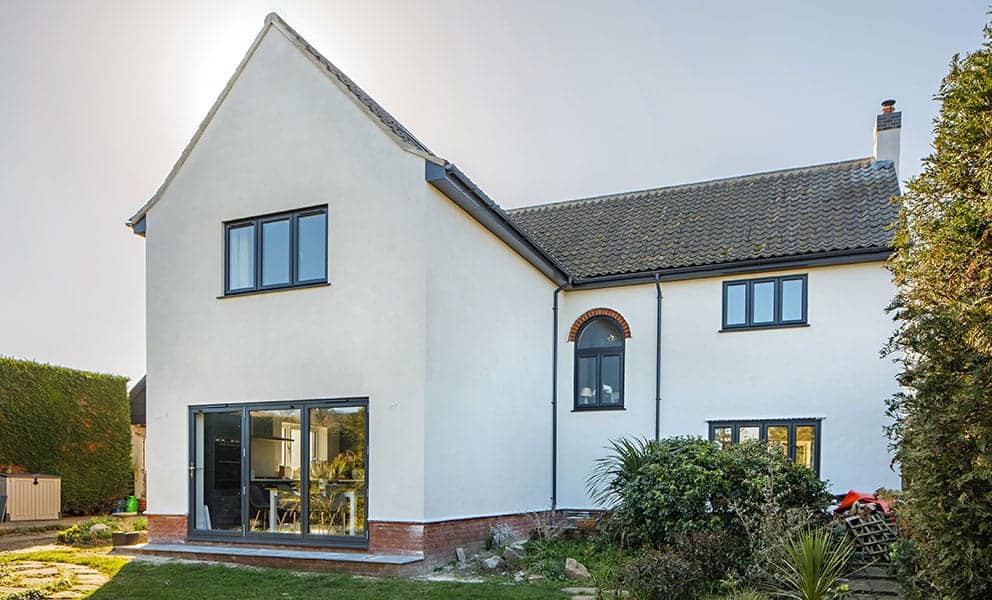
To make things clearer, this post will discuss the different types of rendering systems, their qualities and benefits, and which is best for you.
By definition, render refers to the first coat of plaster applied to a brick or stone surface. At its most rudimentary, this was done using a blend of cement, sand and aggregates – to create a concrete mixture. Unfortunately, the result isn’t particularly long-lasting, high-performing or visually appealing – but it served its basic purpose of covering brickwork before modern renders were formulated.
Moving on from conventional render, mineral render is cement-based with lime and polymers mixed in for added water resistance, flexibility and breathability. While it’s definitely the cheapest modern option, the result is still quite porous, requiring an extra coating to protect it from rain.
Adding an acrylic resin to the mix will create its namesake, acrylic render. This type of render is more water-resistant and flexible than conventional render, but does also suffer from some drawbacks as a result of the acrylic ingredients.
For one, it’s less eco-friendly than the alternatives. But in terms of performance, it is less breathable, which can attract algae on the outside of walls and lead to damp issues internally.
Similar to acrylic render, silicone render is cement-based with silicone mixed in for improved performance. It makes the render more low-maintenance and water-resistant, but unlike acrylic render it doesn’t impair breathability.
Unfortunately, this improvement comes at a cost – both to the buyer and the environment. Silicone render is not an environmentally friendly option and is one of the most expensive products on the market.
Monocouche is a unique system, comprising an initial 4mm base and an 11mm topping of monocouche mixture. The monobase layer includes a mesh and a high-polymer formulation for better adhesion, which is then finished with 11mm of monocouche render, available in a selection of colours.
While it’s more effective than some of the alternatives, it has the same cost and environmental drawbacks as silicone.
One of the more curious types of render is lime, which has seen a resurgence over the past decade. It achieves a distinctive, natural appearance as well as being more breathable than some of its counterparts.
However, it does require a lot of specialist knowledge to get the mixture and application technique right, which understandably makes it one of the most expensive options.
The final type of render is a cork-based system, such as SprayCork. Rather than using damaging ingredients like silicone or acrylic, this system uses a cork infusion which is completely natural. Because of cork’s natural properties, cork-based renders benefit from better adhesion, flexibility and breathability, along with superior water resistance.
They also have the added benefit of fire resistance, thermal insulation and noise reduction, which other renders simply can’t compete with. To top it all off, cork-based render is completely eco-friendly, with no need to fell trees when harvesting the cork-rich bark.
When you’re deciding on the best type of rendering system for your project, it comes down to a balance between performance and cost.
If you’re simply looking for the cheapest option, there’s no question that a mineral render will get the job done. However, that’s a bit of a false economy, as you’ll probably spend more further down the line when you have to repair or replace your render because it’s cracked, damp or worn.
When you invest in a high-quality render, you get a lot more bang for your buck. Using cork-based render as an example, the added heat retention could save you money on energy bills, while better noise insulation is pretty much priceless.
And of course, if you add the environment into the equation, cork-based render is the only option that provides the sought-after performance while still being eco-friendly. If you have any more questions about SprayCork and its application, don’t hesitate to contact the Corksol team.
"*" indicates required fields